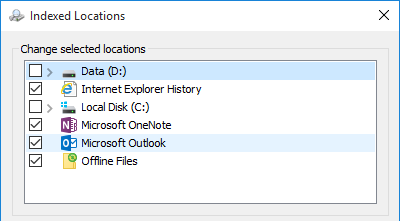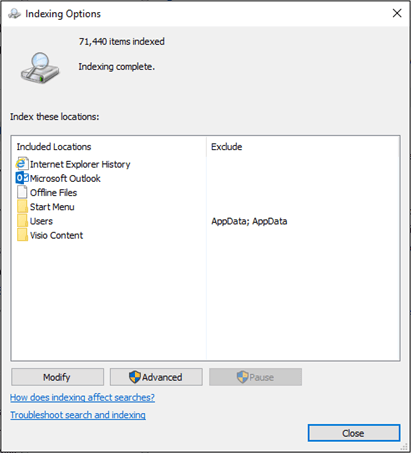

- #Vba outlook rebuild index update#
- #Vba outlook rebuild index code#
- #Vba outlook rebuild index free#
Plus, I get the feeling it's harder to go back and forth from Outlook to Access and vice versa, whereas with Outlook and Excel, one can more easily update changes in each by sending data to the other and overwriting the old data, thus ensuring each has the most updated data of the other. Why not use Access? It's just too complicated for me.
#Vba outlook rebuild index code#
Is there such a way, maybe a third-party tool, to do it with Excel? (That is, WITHOUT needing to code with VBA, which I cannot do.) If there were some built in wizard, like in Access, that's be GREAT! In Access, it's really easy to create forms automatically. I'm looking for something like that, but which permits customization, such as permitting check boxes for Y/N fields and the ability to move the field names and field values around on the form so they make more sense visually.
#Vba outlook rebuild index free#
I know there's the Data>Form 'autoform' built into Excel, good for 32 fields in Access, and J-Walk's free Enhanced Data Form, good for an unlimited number of fields. Set objNavFolder = it possible to create forms in Excel without VBA? More specifically, I'd like a way or a tool to create robust Access-like input/view forms automatically (like in Access) but still use Excel. Set objModule = (olModuleCalendar)įor i = 1 To This will work with default folders opened using Open Other User's Folder command or any folder shared from a sharing invitation. In order to access a folder received from a folder Invitation (or using Open Other User's folder command), you need find the folder on the navigation pane. NameĪll Public Folders folder in Exchange Public Folders store (Exchange only)Īccess a Folder Opened from a Sharing Invitation

The following are the default folder names to use when referencing Outlook's default folders. To add an item to a folder in a shared mailbox, use Items.add: Set newCalFolder = NS.GetSharedDefaultFolder(objOwner, olFolderCalendar) Set objOwner = NS.CreateRecipient("maryc") Set NS = Application.GetNamespace("MAPI") You can use the mailbox owner's display name, alias, or email address when resolving the recipient. If the shared folder was opened from a sharing invitation (or Open Other User's folder command), you may need to use the method in the next section. To access a shared folder in another user's Exchange server mailbox, you need to use GetSharedDefaultFolder to reference the mailbox, after resolving the address to the folder. Set Items = GetFolderPath("New PST\Test Cal").ItemsĪfter adding the function to ThisOutlookSession:įunction GetFolderPath(ByVal FolderPath As String) As Outlook.FolderįolderPath = Right(FolderPath, Len(FolderPath) - 2) Call the function in your macro in this manner, where GetFolderPath is the function name: To use a specific folder in another data file in the profile, you need to use a function. To use the currently selected folder, you'll need to use: Set Items = Session.GetDefaultFolder(olFolderCalendar)._ When the folder is a subfolder under the default Calendar folder, use this instead: Set Items = Session.GetDefaultFolder(olFolderCalendar).Parent._ To use a folder at the same level as the Default folders (such as Calendar, Inbox etc), use this in place of Set Items = Ns.GetDefaultFolder(olFolderCalendar).Items, where SharedCal is the folder name:


 0 kommentar(er)
0 kommentar(er)
